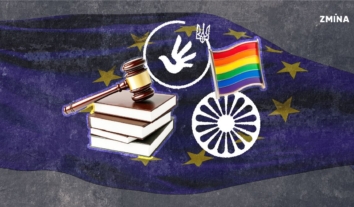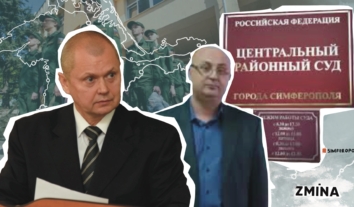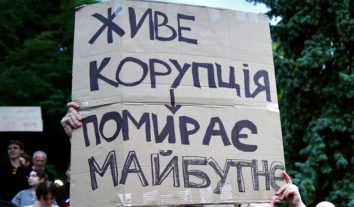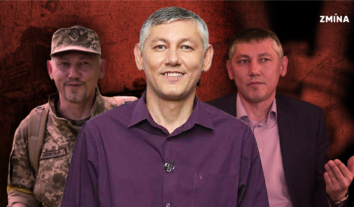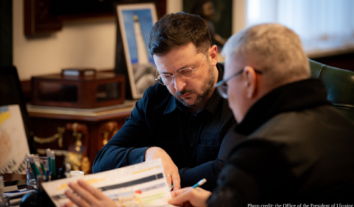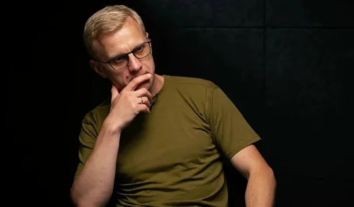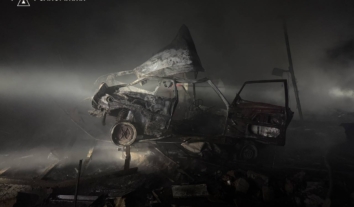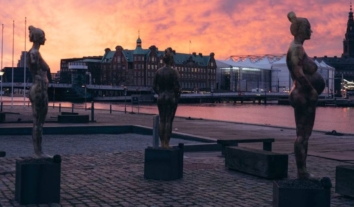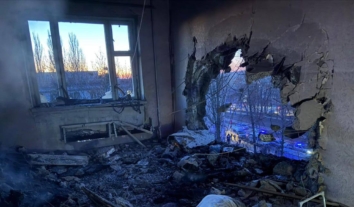95 executions in Donbas
Human rights defenders of the Mirniy Bereh (Shore of Peace) public organization, who are searching for missing persons, have recorded 95 cases of executions in the east of Ukraine.
This article contains photos that may be shocking.
On June 6, human rights defenders have presented their report “Executed in Donbas” at the Ukrainian Crisis Media Center.
Kateryna Vizhevska, Deputy Chairman of the Mirniy Bereh, is convinced that the study will be the key to the inevitability of punishment for violators of the right to life.
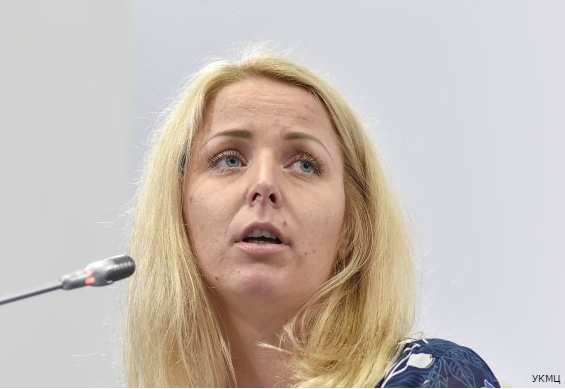
“Ukraine and the world must know and understand that is unacceptable to hang a living person by the feet and rip off his skin like a ram, drill a volunteer woman’s kneecaps, break the limbs of the fingers, with a hammer, cut them off, use detainees as sappers”, – she said.
For more than half a year, human rights defenders and public investigators have collected photos and video evidence, interviewed witnesses and conducted their own investigations. They are convinced that the collected materials will become additional evidence of international crimes for the International Criminal Court, which occurred in Ukraine.
The document states that removing people’s eyes, “the Russian roulette game”, executions and tortures have become habitual amusements for representatives of illegal armed groups (IAG).
“There are divisions in the IAG that do not take prisoners as a matter of principle. They kill them after detentions, sometimes they conduct brutal interrogations and tortures before executions (16 dead – ed.). Often killers are boasting with committed actions in social networks and thematic Internet resources, which can be accessed by anybody, even a child”, – wrote the authors of the report.
STATISTICS
Of the 95 executed people, 50 were civilians. 63 people were killed with the use of firearms, 18 died from tortures. Among the dead are 84 men and 11 women.
Human rights defenders accuse the IAG of Donetsk region in the executions of 49 people, in the IAG of Luhansk region in the executions of 30 people, and the Ukrainian military in 11 cases of executions. The human rights defenders were unable to establish perpetrators of the deaths of five people.
The authors of the report reveal the stories of 9 deceased persons and those who were tortured by illegal armed groups in the Luhansk and Donetsk regions. The organization made a promise to the Human Rights Information Centre to tell about 11 cases of executions by Ukrainian military.
MURDER OF THE SOLDIER
On September 5, 2014, the military actions in the east of Ukraine were supposed to cease in accordance with the Minsk accords and the warring parties were to retreat to a preliminary agreed demarcation line. Therefore, 24th unit of the territorial defense brigade (TDB) Aidar left its positions near the Metalist village in Luhansk region and moved to Shchastya by two cars. However, the military were ambushed – they were shot by the militants of the diversionary-assault reconnaissance group (DARG) Rusich. Only four people remained alive out of 28.
After conducting the investigation, human rights defenders point out that the militants captured the W2863 soldier alive. But, as they note, the reconnaissance group of the IAG differed in that they were not taking captives. They ripped the man’s stomach which did not lead to immediate death. Photos and videos recorded that the soldier was subsequently shot in the head.

The authors of the report called Milchakov, the leader of the DARG Rusich, as perpetrator of tortures and the murder In addition, they suspect that the resident of Norway Petrovsky Jan Igorovych (“Slovian”) Polovin Pavlo Volodymyrovych (“Ugolyok”) from Luhansk region and Vitaly Orlov (“Whiskas”) from Brovary are also involved in the crimes.
MYKHAILO SLISENKO
The driver of the 24th Aidar territorial defense battalion Mykhailo Slisenko was ambushed on the same September 5 on the Shchastya – Metalist highway near the Tsvitni Pisky village in the Luhansk region.
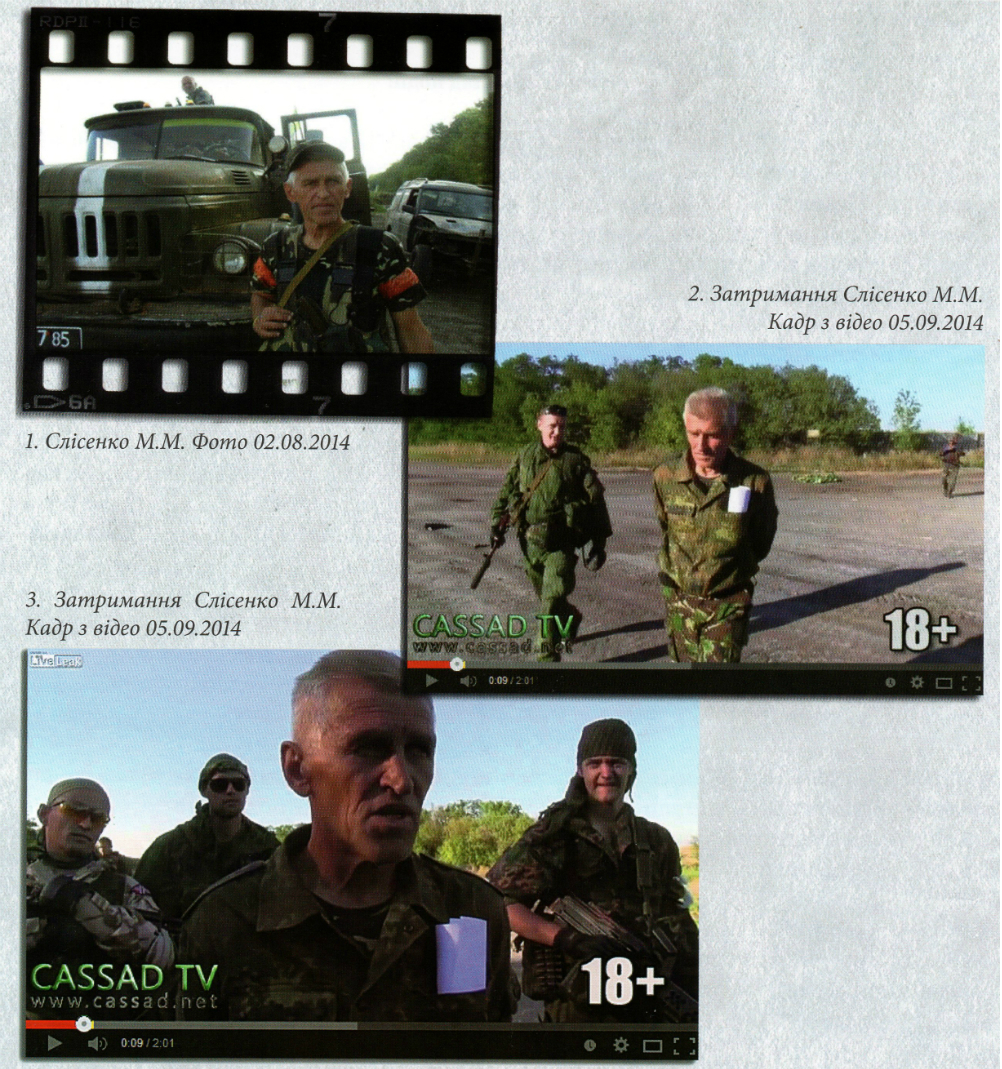
The man was kept in the commandant’s office of the regional military commissariat. He was tortured because he was a soldier of an Aidar battalion. According to two witnesses, Mikhail Slisenko broke down under tortures during interrogation and died on September 7, 2014.
The witness W3181 tells that the attackers threw him to the body of deceased with the words: “Say thanks that you not soldier of an Aidar battalion”.
The authors of the report suspect militants of the subversive and assault reconnaissance group Patriot – Smolyankin Ioan Anatoliyovych, Kyselyov Vitaly Viktorovych and militants of the Zorya (Dawn) battalion – Chernyshev Evgeny (“Kolobok”), a man named “Lyotchyk” (Pilot) in the murder.
EXECUTION AT SHYSHKOVE
In the evening of September 5, 2014, the military of the Ukrainian Armed Forces were ambushed in the vicinity of the villages of Kruta Hora and Raivka in the Luhansk region. Two witnesses who hid in the bushes 20 meters from the scene told that the members of the IAG opened fire demanding to lay down their arms. Ukrainian military urged the militants not to shoot, because they had badly wounded person among them. Thus, four were captured.
The witnesses that militants gave an order to put black bags on the heads of prisoners and take them Damba base of the IAG.
The captured were found in the mass grave site on June 4, 2015, near the Kruta Hora village.
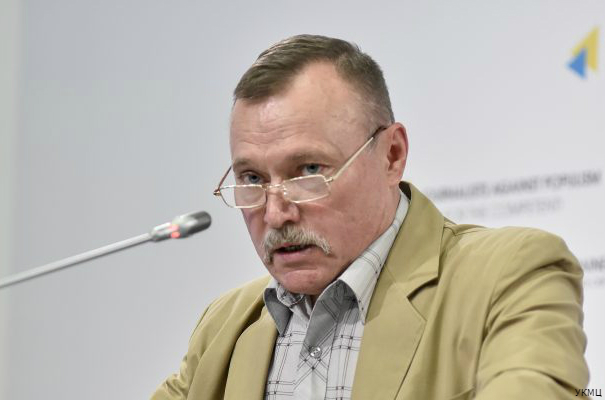
Roman Yatsynych, public investigator of the Mirniy Bereh, claims that the military servicemen were shot. His colleagues refer to a videotape, they recognized the men on the videotape.
“There are a lot of unexplained moments in these murders and we created a fake VKontakte profile of a man called Semen and contacted Anatoly Ageyev from the Russian Belgorod, who at the time of the crime was in the Mangoose special designation company, which was part of the Zorya battalion”, – said Roman Yatsynych.
According to project manager Gennady Scherbak, Anatoly Ageyev sent the video himself.
“Everyone who was in the video was hit in the head with. And then they jumped on their bodies”, – as public investigator has quoted Anatoly Ageyev.
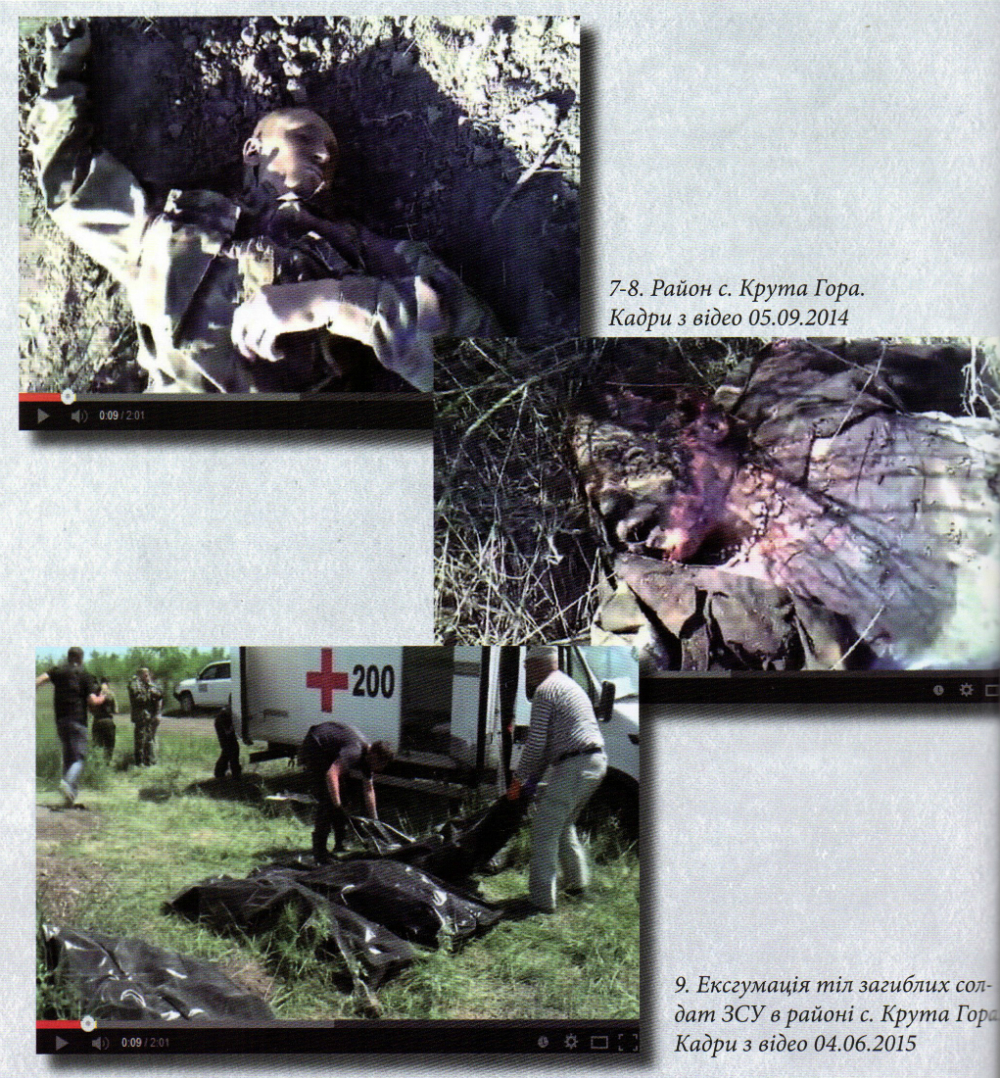
In addition, authors of the report suspect other militants of the Zorya battalion in the crimes. Particularly, Mykhailo Krayev from Moscow, Mykhailo Ivanov from Kazan and a Russian nicknamed “Granite”.
OLEKSIY KUDRYAVTSEV
On July 14, 2014, representatives of the IAG of Donetsk region took Oleksiy Kudryavtsev from the shuttle bus that was going in Artemivsk. There, a man served in the battalion of the special police patrol service. According to the bus driver’s testimony, the militants found Oleksiy’s police uniform in his bag and a certificate of a police officer.
The authors of the report note that little is known about his captivity. In the evening of July 14, an interrogation video appeared on the Internet. His father Mykola Kudryavtsev suggests that Oleksiy was under the influence of psychotropic substances during the recording, because he does not have a speech defect habitual for him. The father is convinced that his son had to confess to crimes he did not commit.
At the end of the video, the commander of the Horlivka self-defense group, Ihor Bezler (“Bes”), said that he had destroyed the man.
Witnesses told human rights defenders that Ihor Bezler showed a video with Oleksiy’s interrogation. According to them, he was scalped and his legs were drilled. The militant named “Yakut” told other prisoners that Oleksiy was executed. Human rights defenders interviewed five witnesses in the case of policeman murder.
Earlier, Oleh Levytskyi, representative of the Ukrainian Helsinki Human Rights Union, outraged that the Investigative Department of Donetsk Regional Police has not investigated the proceedings under Article 115 of the Criminal Code of Ukraine (premeditated murder). Ihor Bezler served with charges under this article in November 2015.
QUALITY OF INVESTIGATIONS
The authors of the document are convinced that, given the nature, scale and systemic nature of crimes, these are crimes against humanity and war crimes, in accordance with the Rome Statute of the International Criminal Court.
They note that the Criminal Code of Ukraine does not contain precise details of crimes, which “under appropriate circumstances makes it impossible for an appropriate level of accuracy and concreteness to effectively prosecute perpetrators of violations of international humanitarian law”. But at the same time they believe that the main problem is not the absence of proper legislation, but the unwillingness of the Ukrainian authorities to exercise their constitutional functions.
Lawyer of the Mirniy Bereh, Borys Knyrov said that at the present day all the energy of the victims and their defenders in criminal proceedings is directed to make force the investigator to work.
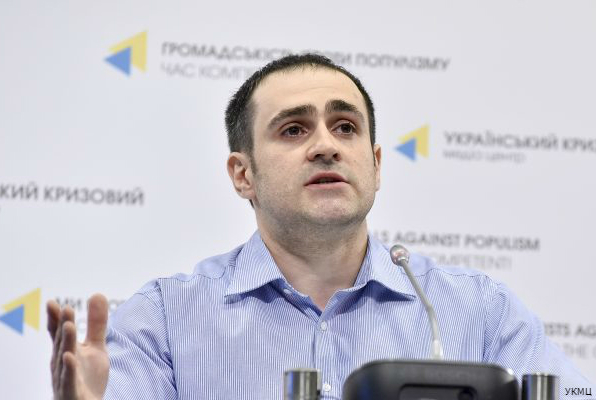
“A person can not be found for more than a year, and the investigator not only has not done any investigative actions even with sufficient information from relatives at hand, let alone has not performed any procedural actions – the applicant is not recognized as a victim, and the rights in criminal proceedings are not explained. And this happens systematically. This attitude towards relatives in accordance with Article 3 of the Convention on Human Rights and Fundamental Freedoms is considered inhuman treatment”, – he said.
According to him, in some cases, investigators can call the victims once a year and ask again if they have new information. This brings them even greater suffering.
“There are cases when the victims find witnesses themselves, interrogate them and pass on information to the investigators”, – Borys Knyrov added and said that the absence of a real punishment for an employee for inaction has become a problem for the full operation of the legal system in Ukraine.
The authors of the report are sure that there is no sense in demanding from the IAG of Donetsk and Luhansk regions to respect the rights of citizens, since they are not subjects of international law. They impose responsibility on Russia, which controls the occupied territories and illegal armed groups.
“Through international pressure on Russia it is possible to cease military activities and regain the control of the occupied territories”, – Borys Knyrov said.
Recently, human rights defenders from the Human Rights Agenda have drafted a bill “On amending the Criminal Code of Ukraine to ensure its harmonization with the provisions of international law”. The document enables national law enforcement agencies to investigate crimes against humanity and war crimes in accordance with international humanitarian law. Currently, human rights defenders are planning to register the draft law in the Verkhovna Rada.
Mykola Mirnyj, journalist of the Human Rights Information Centre

